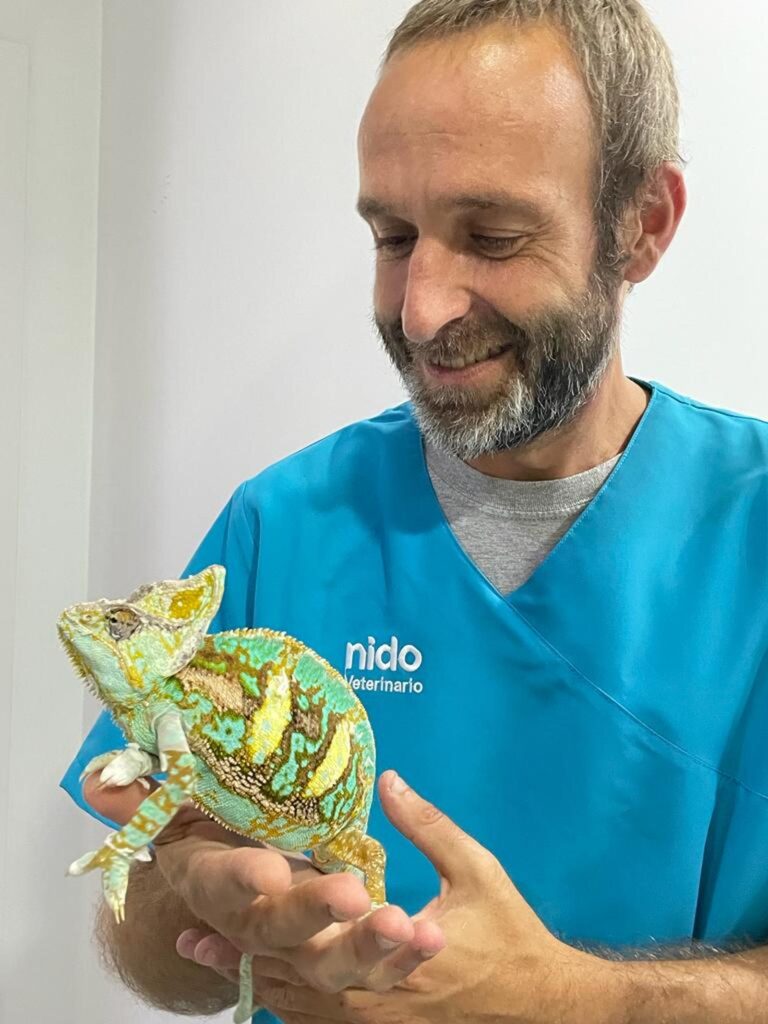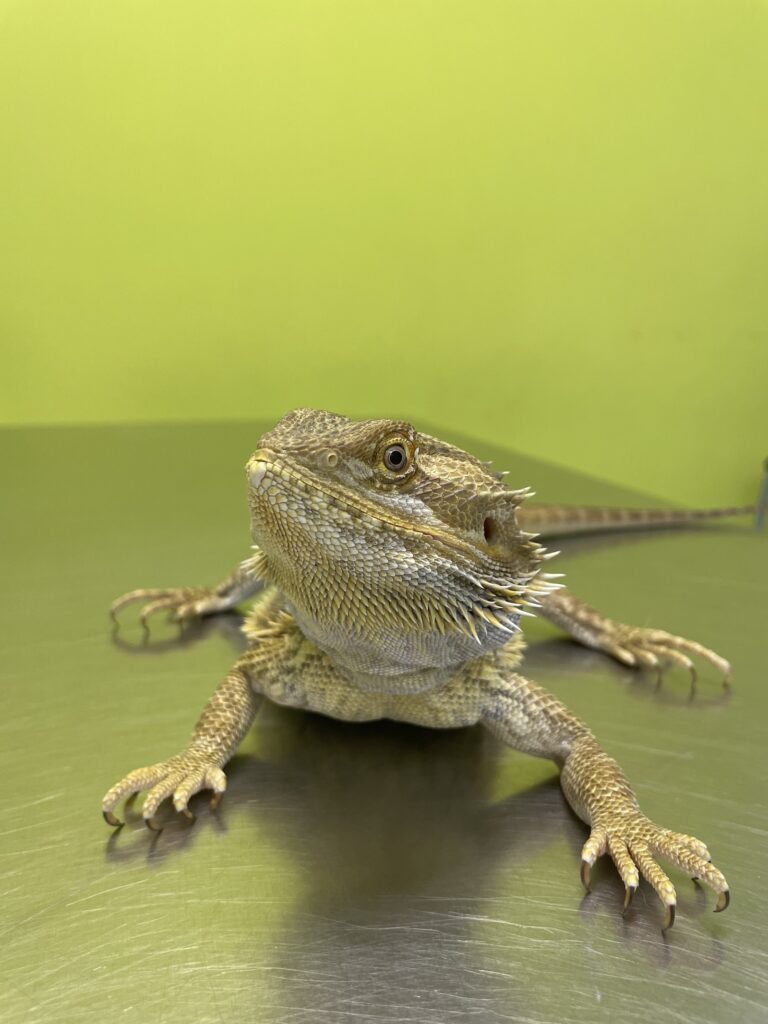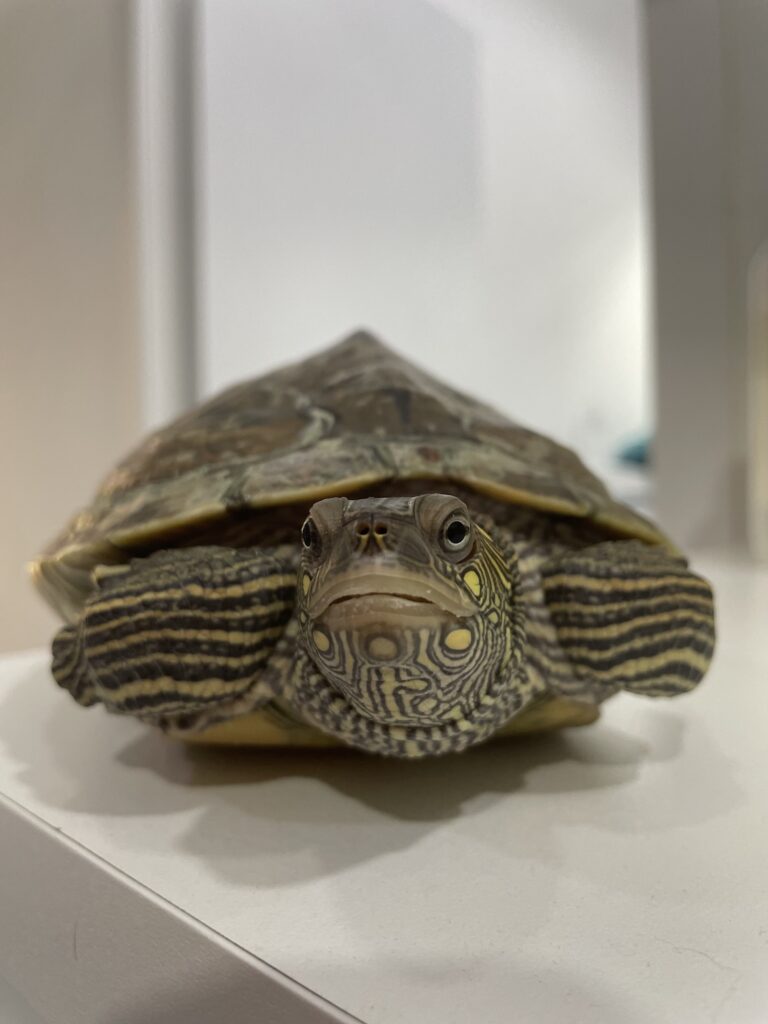One of the main groups of animals that we care for at Clínica Nido Valencia are reptiles. Different species of turtles, lizards and snakes generally come for consultation. Practically each species of reptile has particularities in terms of its environmental conditions, nutritional requirements or social structure, so that many of its diseases are directly related to its management in captivity. However, there are another series of pathologies that our veterinarians also observe daily.
Below we show some of the main diseases most commonly diagnosed in these interesting species.
-
Hypovitaminosis A: This is a very present disease in daily clinical practice, especially in chelonians associated with aquatic environments. Vitamin A deficiency is caused by a nutritional imbalance. Retinol or vitamin A is essential to maintain the correct integrity of tissues such as skin, mucous membranes, bones or reproductive organs. The main sign of hypovitaminosis A is blepharoconjunctivitis (inflammation of the eyelids and ocular conjunctiva), as well as lesions in the mouth, respiratory tract or ears.
-
Metabolic bone disease (MOD): also known as secondary nutritional hyperparathyroidism, it is the main metabolic disease of reptiles. It is a nutritional imbalance in which there is a proportional deficiency of calcium (due to a low-calcium diet or insufficient supply of ultraviolet light) and an excess of phosphorus. Reptiles that suffer from this disease manifest skeletal malformations, weakness of long bones and shell, alteration in growth, muscle spasms, anorexia and constipation, among others. Early diagnosis and treatment of this dietary deficiency improves the prognosis of affected patients.
-
Gout: it is the second most common metabolic pathology in tortoises, lizards and snakes. This disease is characterized by the abnormal accumulation of uric acid due to excessive production or elimination hindered by a secondary pathology (kidney failure, dehydration, etc.). This uric acid deposition can occur in the internal organs (visceral gout) or in the joints (articular gout). It generally has a poor prognosis.
-
Respiratory pathology: its presentation does not have clinical manifestations as evident as in mammals. It can be associated with weight loss, dehydration and apathy; in more severe cases it presents with open-mouth breathing or frothy bleeding from the oral cavity. Some of its main causes are infectious (bacteria, viruses, fungi and parasites), although respiratory diseases can also be associated with aspiration pneumonia, heart disease, obesity, neoplasia, trauma or even changes in shedding.
Below we show some of the main diseases most commonly diagnosed in these interesting species.
-
Hypovitaminosis A: This is a very present disease in daily clinical practice, especially in chelonians associated with aquatic environments. Vitamin A deficiency is caused by a nutritional imbalance. Retinol or vitamin A is essential to maintain the correct integrity of tissues such as skin, mucous membranes, bones or reproductive organs. The main sign of hypovitaminosis A is blepharoconjunctivitis (inflammation of the eyelids and ocular conjunctiva), as well as lesions in the mouth, respiratory tract or ears.
-
Metabolic bone disease (MOD): also known as secondary nutritional hyperparathyroidism, it is the main metabolic disease of reptiles. It is a nutritional imbalance in which there is a proportional deficiency of calcium (due to a low-calcium diet or insufficient supply of ultraviolet light) and an excess of phosphorus. Reptiles that suffer from this disease manifest skeletal malformations, weakness of long bones and shell, alteration in growth, muscle spasms, anorexia and constipation, among others. Early diagnosis and treatment of this dietary deficiency improves the prognosis of affected patients.
-
Gout: it is the second most common metabolic pathology in tortoises, lizards and snakes. This disease is characterized by the abnormal accumulation of uric acid due to excessive production or elimination hindered by a secondary pathology (kidney failure, dehydration, etc.). This uric acid deposition can occur in the internal organs (visceral gout) or in the joints (articular gout). It generally has a poor prognosis.
-
Respiratory pathology: its presentation does not have clinical manifestations as evident as in mammals. It can be associated with weight loss, dehydration and apathy; in more severe cases it presents with open-mouth breathing or frothy bleeding from the oral cavity. Some of its main causes are infectious (bacteria, viruses, fungi and parasites), although respiratory diseases can also be associated with aspiration pneumonia, heart disease, obesity, neoplasia, trauma or even changes in shedding.


- Dystocia: egg retention is a common problem in reptiles and the causes that cause it are multiple, some of them They are: installation that incapacitates laying, alteration in environmental conditions (temperature, humidity, photoperiod), nutritional deficits, metabolic diseases, malformations, prolapse, etc. Patients who suffer from dystocia appear lethargic, sometimes coelomic distension, anorexia, constipation are observed, and cloacal prolapses may occur.
-
Cloacal prolapse: a prolapse consists of the pathological externalization of an organ through the cloacal orifice. The structures that usually prolapse in reptiles are the oviduct, penis, rectum or bladder. The causes of prolapse vary depending on the tissue affected. At a general level, oviduct prolapses are related to dystocias and salpingitis. Rectal prolapses are usually associated with endoparasitism, diarrhea or constipation. Penile prolapses are caused by trauma, excessive sexual activity or hypocalcemia. Finally, the strangest case is bladder prolapse, which is related to the presence of urolithiasis.
-
Parasites: very present in the reptile clinic. The most common (external) ectoparasites are mites (Ophyonsys natricis) and ticks. The endoparasites (internal) most present in reptiles are oxyurids, ascarids, coccidia, cryptosporidia and ciliates of the genera Nyctotheroides and Balantidium.
-
Viruses: some of the most common viruses in reptiles are adenovirus, iridovirus, herpesvirus, papillomavirus and paramyxovirus.
-
Dysecdysis: reptiles are characterized by shedding their skin from time to time, the fact of doing so denotes a good state of health. However, in captive conditions, the development of dysecdysis or alteration in molting is common. Most triggers are related to handling, for example: temperatures lower than required, low humidity, presence of abrasive accessories, burns, stress or nutritional deficiencies. Dysecdysis can also be associated with disease (mites, fungi, thyroid dysfunction…). If retention of shedding or skin alterations is observed, specialist care is recommended, as it can trigger systemic pathology.
-
Ingestion of a foreign body: this is a complication that is observed in all types of reptiles, it is usually associated with excessive ingestion of the substrate. from the terrarium or from suboptimal objects that the animal finds in its environment. Among other symptoms, the patient generally manifests anorexia and inability to defecate. However, it is important to consider that many cases of digestive obstruction are described in association with another underlying pathology.
-
Trauma: turtles are the animals that most commonly suffer vertical falls, as well as being hit by vehicles. The direct consequence is usually a fracture of the shell, however, it is recommended that the pet be examined by a veterinarian even if there are no obvious external injuries. Lung contusions and damage to internal organs are also associated with this type of trauma.
-
Thermal burns: Unlike other animals, many reptiles are housed in captivity in an environment that requires external heat input. A direct consequence of handling is the development of burns due to overexposure to heat sources or thermal blankets.



